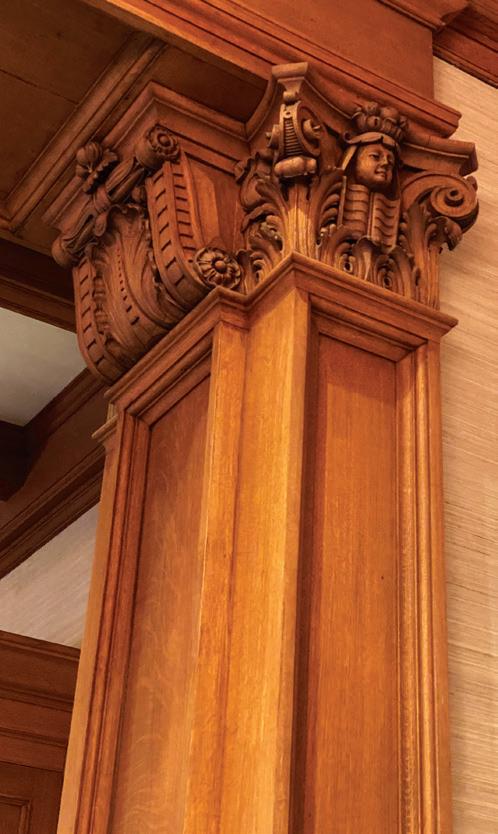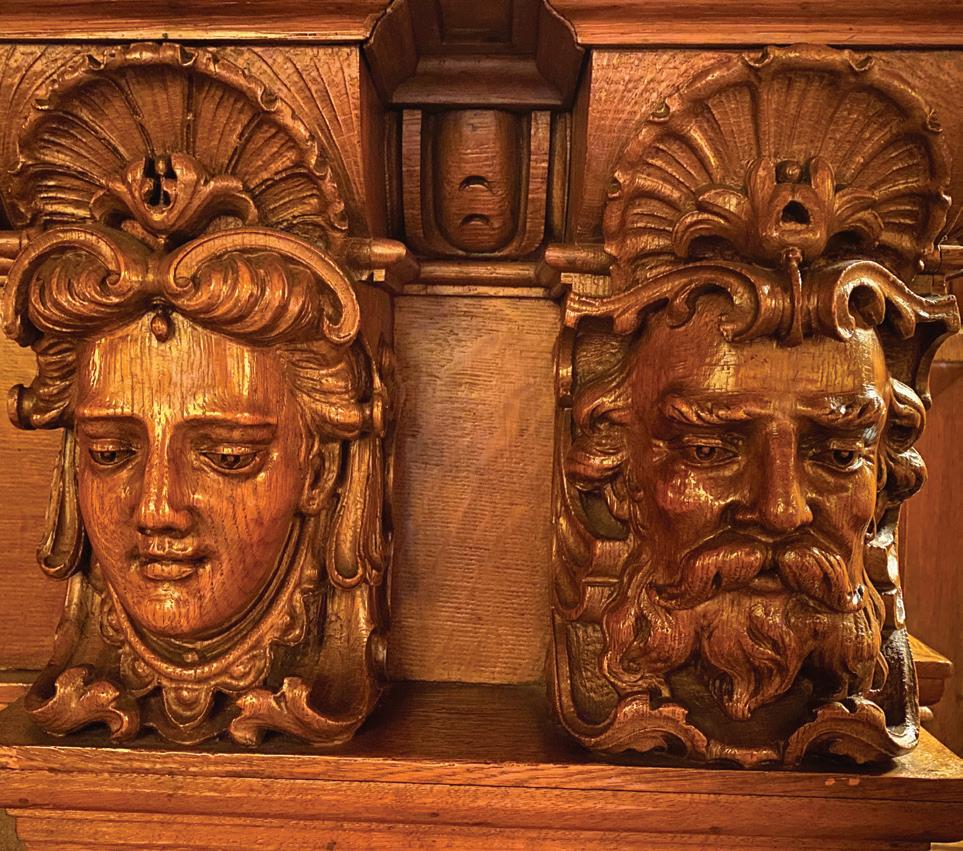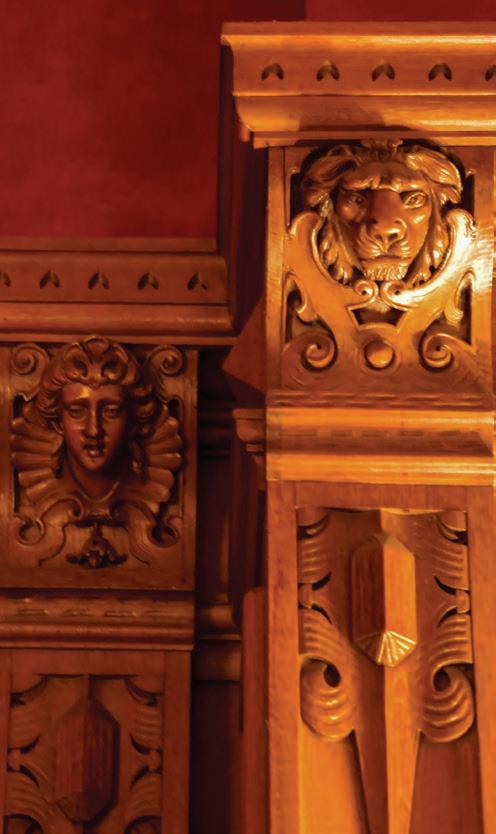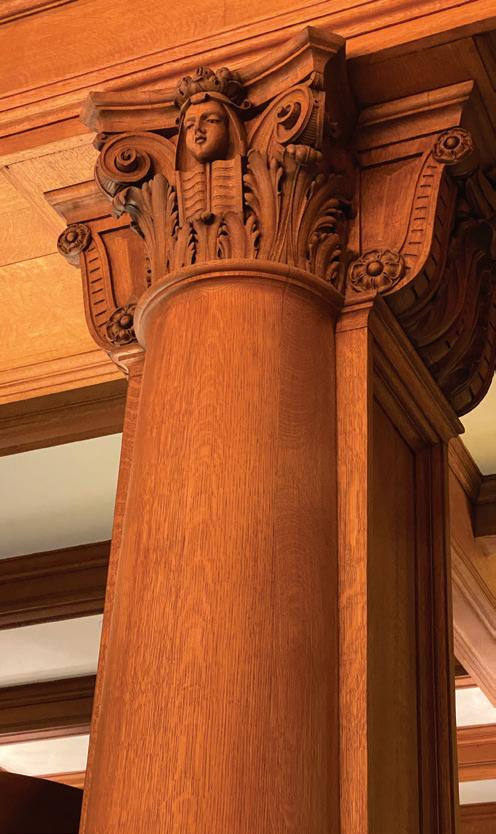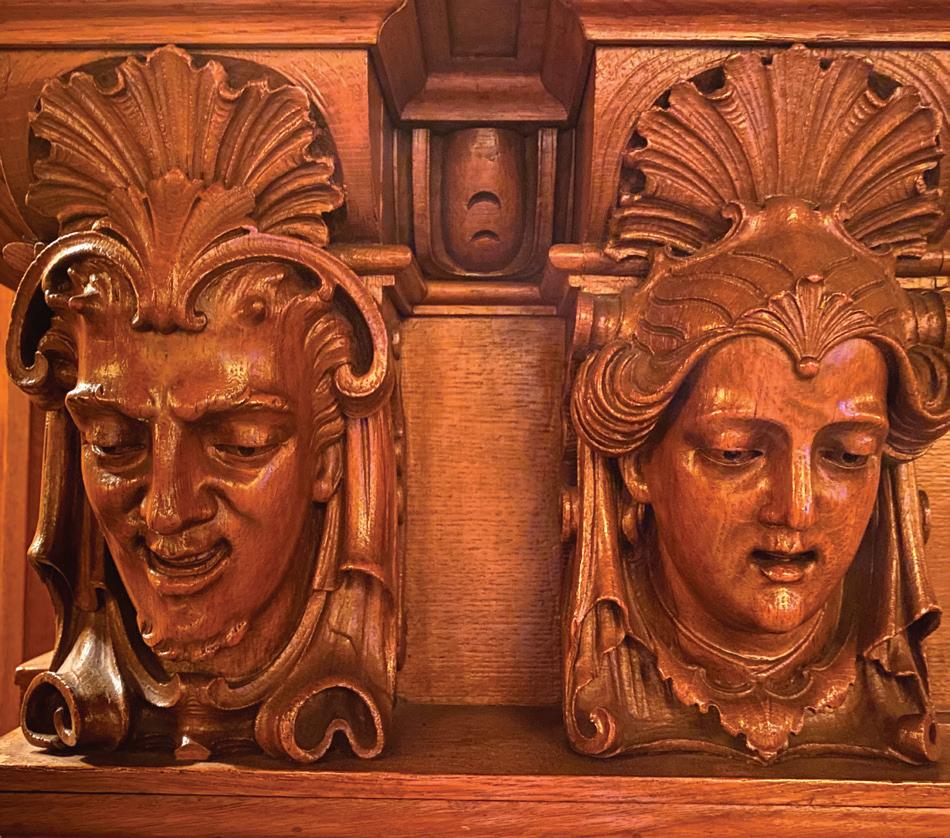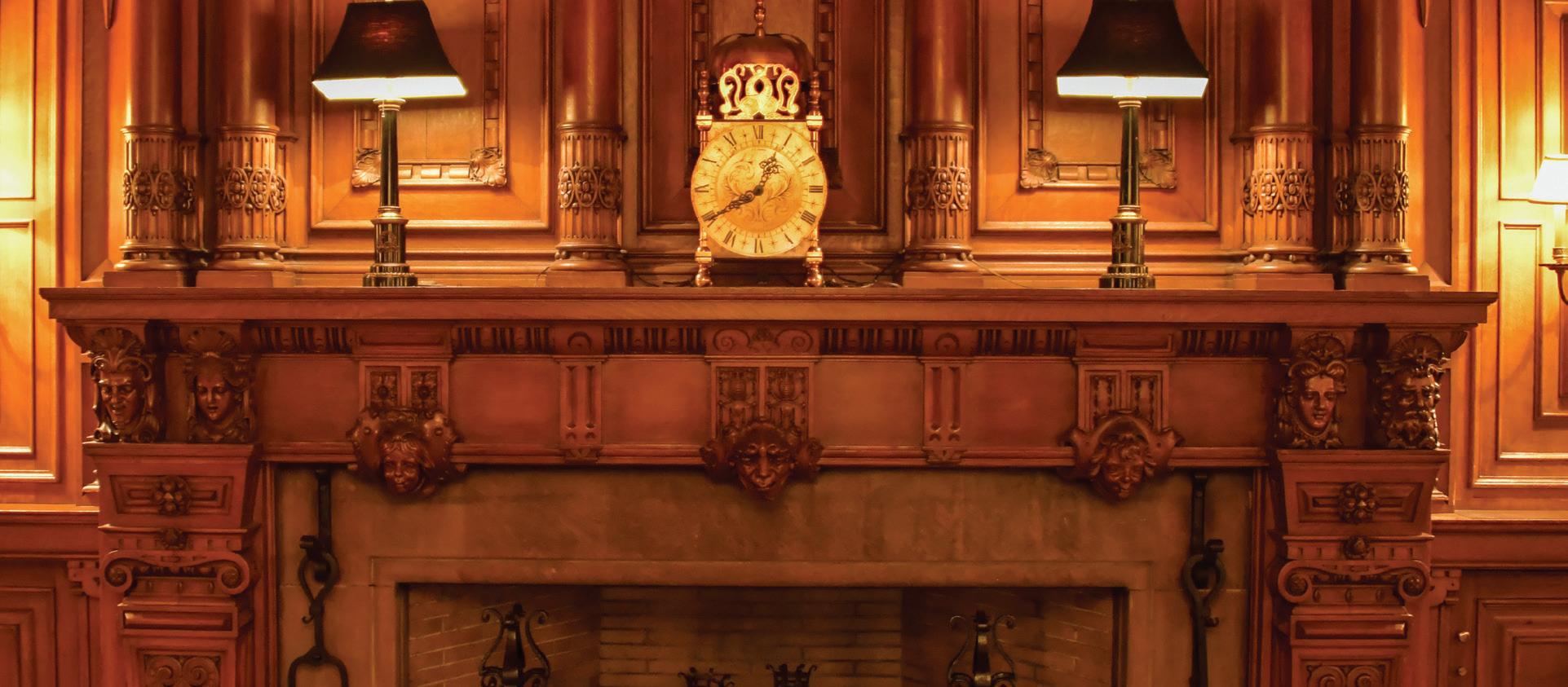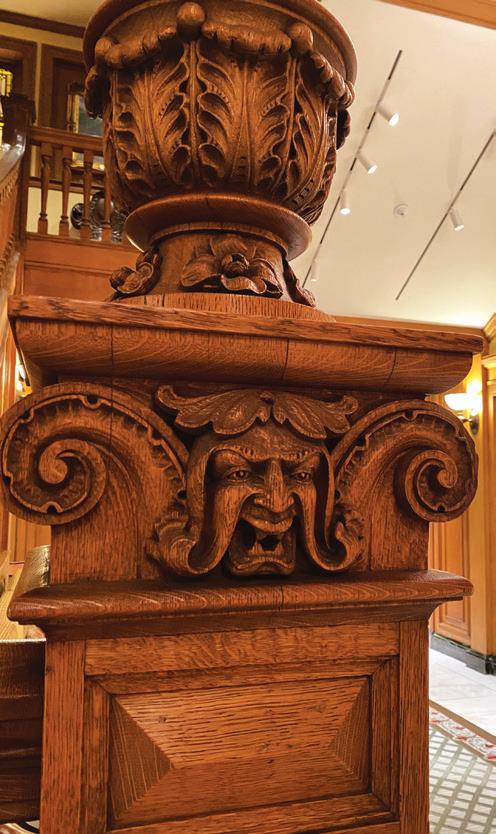
1 minute read
ROOM TO MOVE
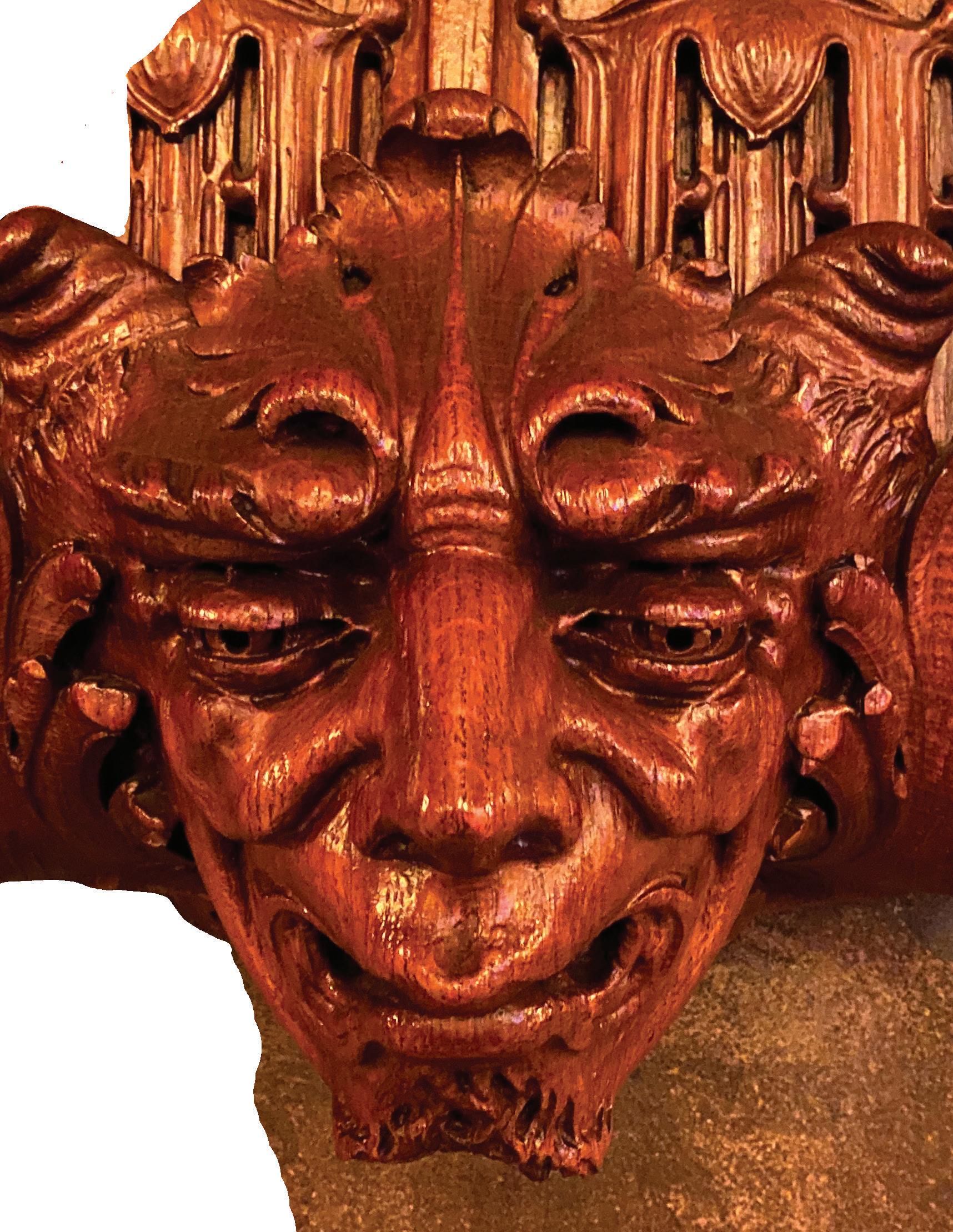
THE
UNIFYING HEADS
OF THE 1901-04 EXPANSION
T
he carved wooden faces in the Cigar Bar of the Duquesne Club have a rich history dating back to the large addition built between 1901 and 1904.
During that time, Pittsburgh architects Frank E. Rutan and Frederick A. Russell added a new café to adjoin the Billiard Room on the Club’s first floor.
When it was built, the new café was described as “a striking example of old English carving. Oak is the timber used and the carving is exquisite.”
The wood paneling and carving in the cafe, which is now known as the Cigar Bar, are indeed exquisite.
ROOM TO MOVE
Perhaps the most interesting feature is the many varied heads - male and female, idealized and grotesque – that decorate Rutan & Russell’s cafe.
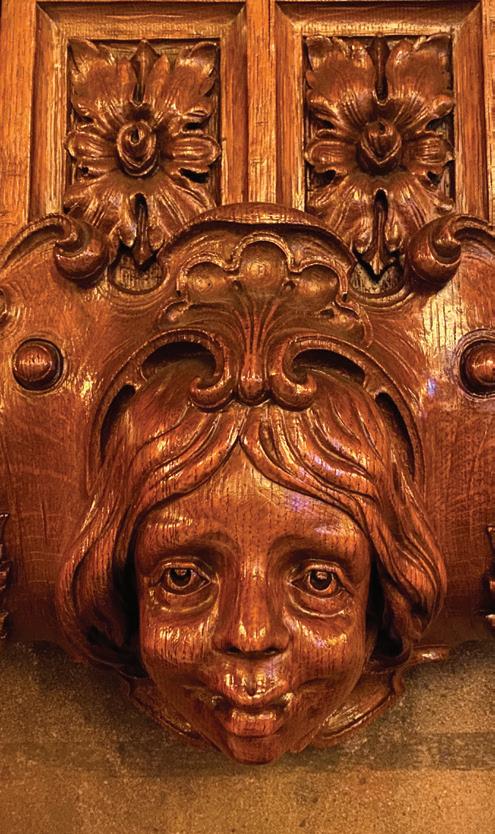
Their use of these carved heads to unify the interior design is obvious, for they also appear in the newel post at the base of the great staircase, in the capitals in the Reading Room, and in several surviving pieces of furniture from this period, including chairs and a table located on the first floor of the Club.
Rutan & Russell’s classicizing details and furniture were intended to provide unity and an up-to-date style to the interior, while the design for their exterior addition pays homage to the Romanesque exterior of architects Longfellow, Alden, & Harlow.
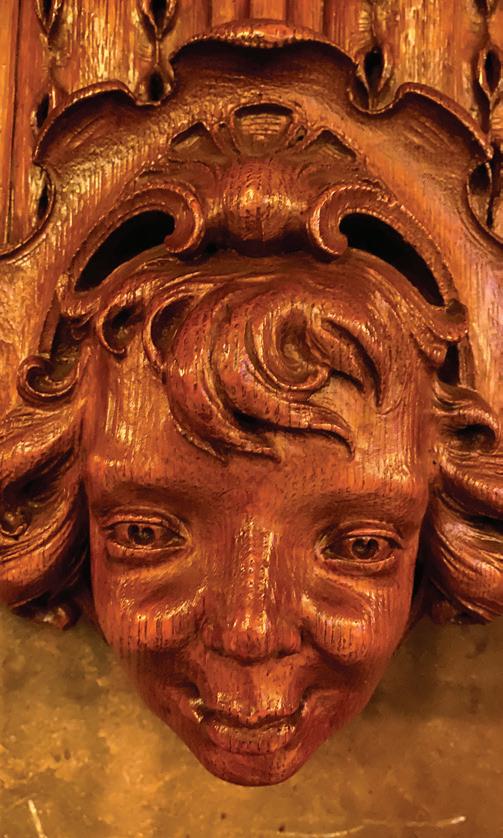
Great Staircase
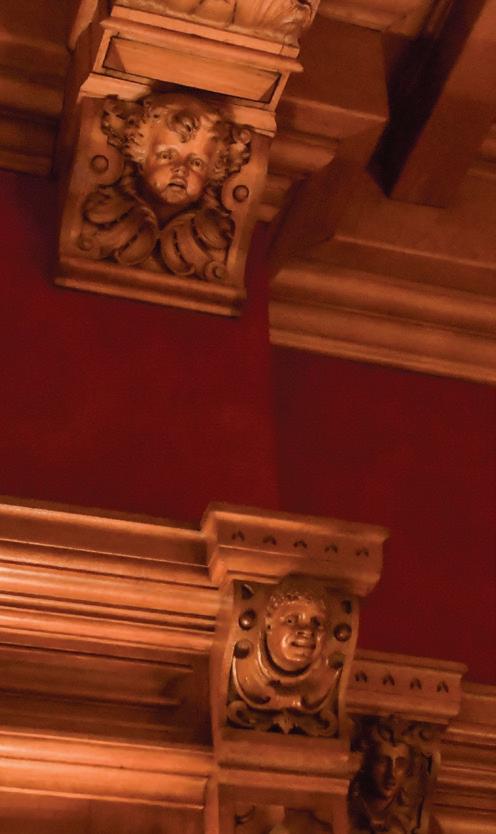
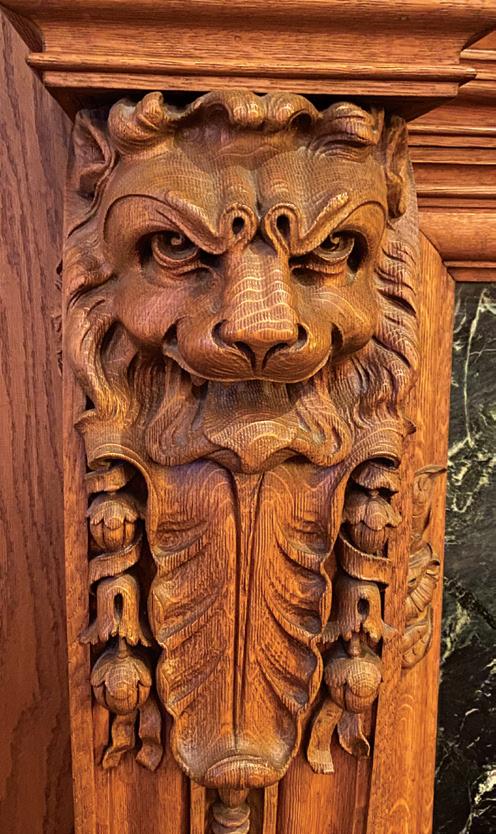
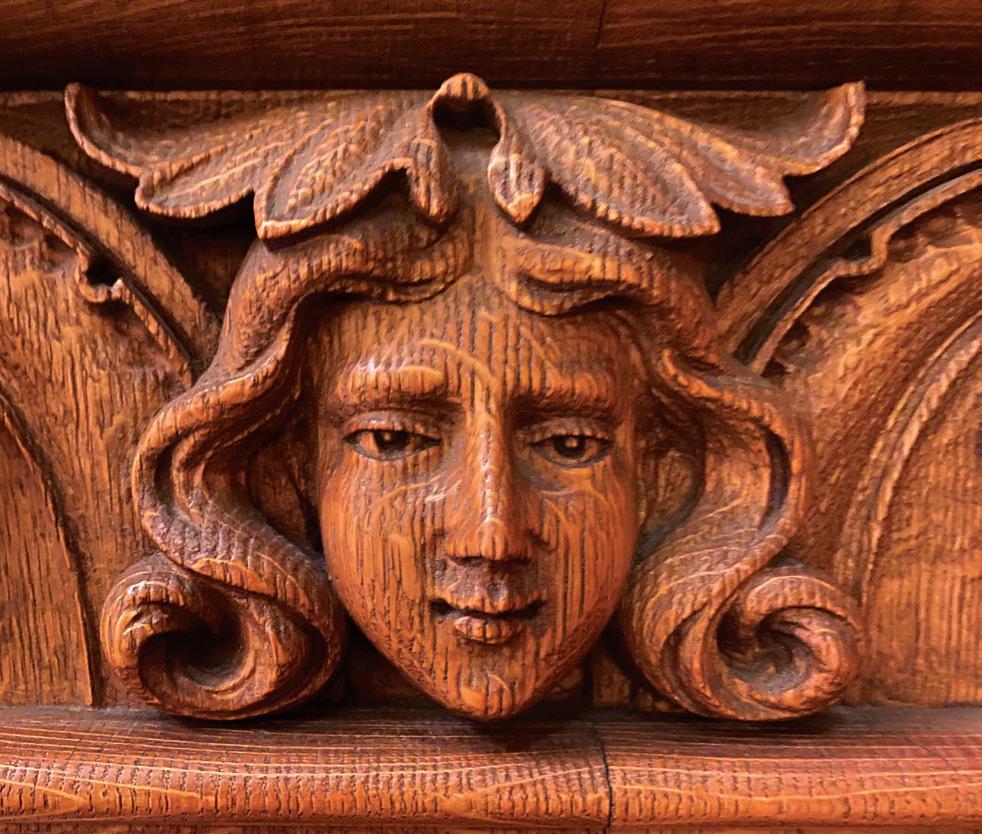
Reading Room
